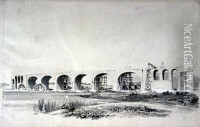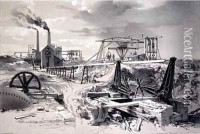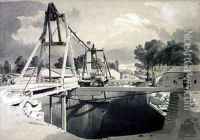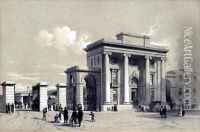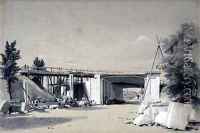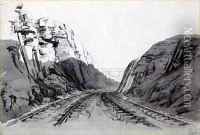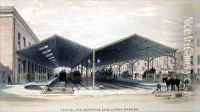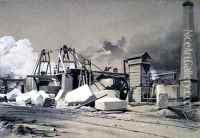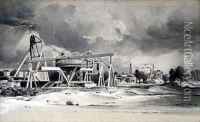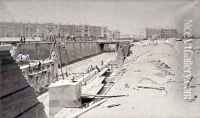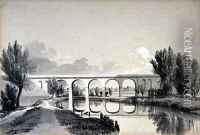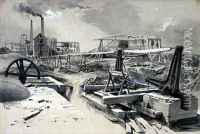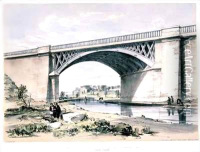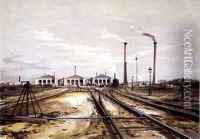John Cooke Bourne Paintings
John Cooke Bourne was a British artist, engraver, and lithographer, known primarily for his detailed prints and drawings of industrial subjects in the Victorian era, particularly those related to the burgeoning railway industry in the United Kingdom. Born in 1814, Bourne's work provides a valuable historical record of the early phases of railway construction and the industrial landscape of the time.
Bourne displayed an early talent for drawing and was initially self-taught. His interest in industrial and engineering subjects is most evident in his series of works on the construction of the London and Birmingham Railway, which was one of the major engineering projects of the 19th century. His drawings were collected and published in a volume titled 'Drawings of the London & Birmingham Railway' in 1839.
Aside from railways, Bourne also sketched other significant engineering works of the period, such as the Great Western Railway and the construction of the Thames Tunnel by Marc Isambard Brunel and his son Isambard Kingdom Brunel. His works were appreciated for their technical accuracy and detail, which made them valuable to both the engineering community and the general public interested in the marvels of the industrial age.
Bourne's work as an artist extended beyond industrial subjects; he also produced landscapes and coastal scenes. However, it is his contributions to the visual documentation of industrial progress for which he is most remembered. His illustrations not only captured the transformative engineering feats of his time but also the impact of these changes on the environment and society.
John Cooke Bourne's legacy as an artist is closely tied to the history of the Industrial Revolution in Britain. His drawings and prints remain a significant resource for historians and enthusiasts of the early railway era. Bourne died in 1896, having witnessed the incredible changes that industrialization brought to the landscape and infrastructure of 19th-century Britain.
